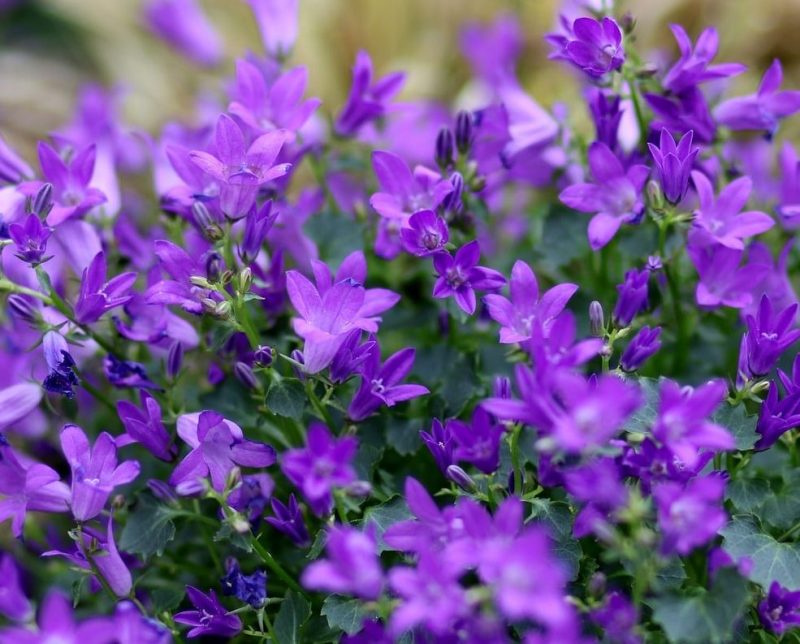There are three factors to consider when learning how to prune lobelia. However, it’s worth noting that you must research the lobelia species; you have to know if it has specific maintenance requirements. More so, pruning itself should not be where maintenance stops, and the ideal environment for the plants should be stable like what a greenhouse offers.
Nonetheless, pruning would be beneficial to keep the plants healthy and keep the location tidy. Remember that lobelias are prone to overtaking an area without proper care. Just remember to handle lobelia with care, especially with pets and kids around, as they can be poisonous.

How To Prune Lobelia For Beginners
Pinching
The first thing that you have to learn when pruning lobelia is pinching. You don’t have to immediately trim or cut back your plant, especially when you have just planted it. The act of pinching the tips of a new plant will encourage branching and lead to bushy growth.
You can pinch every stem of your newly planted lobelia until the second bud or top leaves. Simply use your fingers to squeeze the stem’s tip. This way, these points will grow new branches with flowers for a fuller lobelia plant.
The best time to pinch lobelia plants is in early spring. You can check for new growing stems around six inches long and pinch them back. Otherwise, newly planted lobelias should establish themselves first before you pinch them.
Trimming
Besides pinching, you will eventually need to trim your lobelia plant, and you can use scissors for this. This is part of your maintenance routine to keep the plant tidy and encourage a healthy bloom. And unlike pinching, you are not limited to spring as a time for trimming lobelia; you can do it any time of the year.
However, do note that some lobelias, especially the spiky types, should finish fading entirely before you clip their stems. You can also trim off your plant’s faded blossoms and use the wilting flowers as a signal to trim the plant by half of its height. Much like pinching, trimming will encourage a fuller look by cutting close to a leaf or a bud.
Cutting back
The final practice for pruning lobelia is cutting the plant back. Compared to trimming, which is essentially a light practice at any time of the year to keep the plant tidy, cutting back is a major pruning. You can do this after the plant stopped blooming or after every flowering period.
Cutting back lobelias will help encourage and extend blooming because you’re removing spent flowers that will produce seeds. Major pruning is beneficial not just for the plant’s appearance but also for its health. Some gardeners even leave some lobelia types in the garden during the summer and then cut them back to encourage fall blooms.
Caring For Lobelia
Maintaining and caring for lobelia doesn’t stop with pinching, trimming, and cutting them back. Besides knowing how to prune lobelia correctly, you also want to place them under ideal conditions. This can be easy to achieve in the greenhouse because the conditions indoors are not fluctuating, and you can adjust them according to the climate outside.
You can start growing lobelia plants in the greenhouse 12 weeks before the last frost and wait for the danger of frost to pass before transplanting them in the garden. A space of 6 inches between the plants is ideal, and an area that receives full sun should encourage growth.
Lobelia is generally easy to grow, especially in moist and fertile soil. Of course, you will need to adjust watering when the climate is hot, and you can fertilize once a month to encourage blooming. Just be mindful of overwatering and exposing lobelia in extreme and harsh temperatures.
Best Lobelia Varieties To Grow
Like with other plants, you want to identify the type of lobelia that you’re growing and give its specific needs. Some of the most common varieties you’ll see are edging lobelias, great blue lobelias, cardinal lobelias, and a hybrid of the latter two. Edging lobelias are known for their trailing habits, and sometimes, they won’t need deadheading.
On the other hand, the great blue lobelia is probably what comes to mind when you think of blue lobelias, and they’re loved for the extended blooming period. The cardinal lobelias are also quite popular from their scarlet-red flowers. Lastly, these two hybrids can give you many color options and will bloom for a long time in the summer.
Do note that there are many species of lobelias, and they are not only perennials. You can also find tender annuals, mounding lobelias, and half-hardy annuals. Besides blue, you may also find lobelia plants with lilac and tropical-colored flowers.
Conclusion
Maintenance plays a significant role in the appearance and health of lobelia plants. Therefore, learning how to prune lobelia plants is crucial if you want to keep your plants happy. In addition to growing them in a stable environment like the greenhouse, check the plants you have and identify if they’ll need pinching, trimming, or cutting back.
Remember that some lobelia types are self-cleaning, so you may not need to deadhead them. On the other hand, trimming to keep the plants neat and cutting back for maintenance are beneficial for their blooming and overall health. You can also pinch back your newly planted lobelias to encourage branching and fuller growth.
